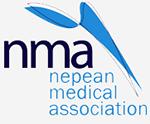2018
I undertook my second elective at the Sigatoka Subdivisional hospital in Fiji. It was a small hospital with 40 beds, maternity ward, ED and a very busy outpatient clinic which saw an average of 90 patients a day. It was also the centre of the subdivision’s Public Health team which coordinated outreach clinics and school visits by nurses and allied health professionals. I also had so much more exposure to infectious diseases including dengue, TB, typhoid and many paediatric skin infections. I had to expand my usual differential list to include these diseases. For example, in Australia, if I were presented with a patient with a chronic cough, the top of my differential list would be COPD or asthma. This is compared to Fiji where the doctors would investigate a possible TB infection as their first priority.
Also, I learnt a very important lesson when I attended non-communicable screening clinics in local villages; it is very hard to give lifestyle advice when you don’t know culture or the local diet. I felt quite challenged when faced with a 65 year old Fijian man who was obese and had severe hypertension living in a remote village. It would have been inappropriate for me to tell him to join a gym or go for a morning jog. Instead I stuck to 2 pieces of advice; reduce salt and cut down on sugar in tea, both of which I learnt from observing traditional life in the village. This experience will change my future practice in how I discuss lifestyle changes in Australia; I will endeavour to learn more about my patient’s lives before I try to change them.






No comments so far!